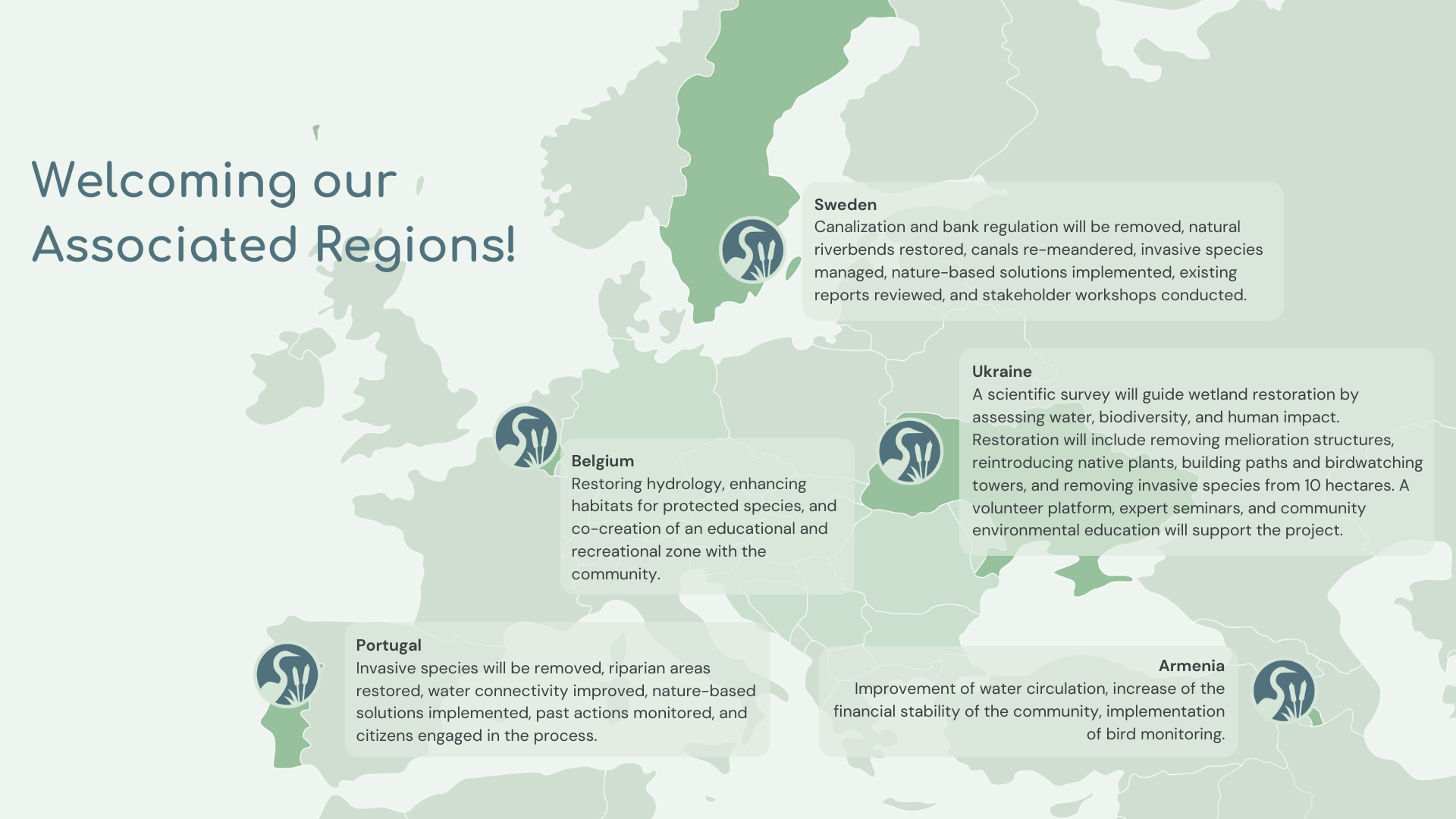
The Restore4Life Consortium met in Bratislava, Slovakia, from 11th to 13th of June 2024 for the project’s second Consortium Meeting.
Day 1: Presentations and alignment on goals and achievements
The first day of the meeting set the stage with a series of presentations that laid the groundwork for the entire event. Each Work Package lead presented their progress, shared insights, and outlined what is to come as part of their tasks. These presentations showed the progress of the project throughout the first year of Restore4Life’s journey.
The first day was also the time during which the first draft of the Wetland Restoration Wiki and a live demo was conducted, showcasing the various map layers.
During the first day, the project partners also held two parallel workshops. One focused on wetland assessment methods (organised by Martin Tschikof and Gabriele Weigelhofer from WP3 and Paul Goriup from WP4). The workshop compared methods and indicators for ecosystem services assessments of different countries using remote sensing and on-the ground data.
The second workshop was dedicated to wetland education and was led by Gabriela Costea from WP2. During this workshop, attendees had the opportunity to bring forward and discuss examples of successful educational programmes. This session was invaluable for sharing innovative approaches and practical experiences in wetland education, inspiring the attendees.
Day 2: Workshops, Consortium Assembly Meeting and Meeting of the advisory board for associated regions
The second day of the meeting was kicked off with two parallel sessions – one on citizen science and one on the exploitation of the project results.
The workshop on citizen science was led by Tim Grandjean, Gabriele Weigelhofer, Eva Feldbacher, and Gabriela Costea. It focused on effective strategies for recruiting and communicating with citizen scientists, as well as various methods to involve them in floodplain assessment. Participants delved into practical approaches for engaging citizen scientists, learning about different methods developed and tested in WP3 for assessing carbon sequestration, biodiversity and key species, and water quality.
Parallel to the workshop on citizen science, Oriane Georges and Elena Blagoeva led a workshop dedicated to the exploitation of project results. Oriane presented key concepts such as what exploitation entails, the identification of key exploitable results (KERs), and an introduction to Technology Readiness Levels (TRLs). This workshop proved to be very fruitful, setting a solid foundation for the upcoming work on maximizing the impact and applicability of the project’s results and findings.
Following the workshops, the consortium met once more to discuss urgent matters and to decide on the next date and location for the Consortium Meeting.
The second day wrapped up with the meeting of the advisory board for associated regions, during which it was decided that the consortium will meet with the advisory board in person in Vienna in the upcoming months, to present in depth the Restore4Life project.
Day 3: Field visit to Monitoring Site Dunajské luhy
On the third day, our partners enjoyed a field trip to the BROZ | Conservation Association, which focuses on conserving and restoring ecosystems along the Danube River. BROZ, one of our supporting partners for our monitoring site in Slovakia, has been showcasing their incredible work over the past 25 years in the Danube-Morava Region, particularly in restoring entire Danube river branch systems.
Our partners had the opportunity to navigate the Danube side arms, which were previously closed off due to alterations for the hydroelectric dams in Gabčíkovo (SK) and Nagymaros (HU). These alterations significantly changed the water regime, affecting the ecological functions of the alluvial ecosystems (e.g., fish spawning and nesting sites for sand martins and kingfishers). Thanks to BROZ’s efforts, several side arms have been fully restored, though many still await renewal.
Following the wetlands visit, our consortium visited the hydroelectric dams in Gabčíkovo to better understand the origins of the radical changes in the branch systems. While the dam has provided Slovakia with 8% of its energy, it has also posed significant conservation challenges due to insufficient water flow.
This field day was invaluable for our consortium, allowing us to better understand our partners’ skills, exchange knowledge, appreciate each other’s specialties and backgrounds, and generate new ideas for future initiatives.


